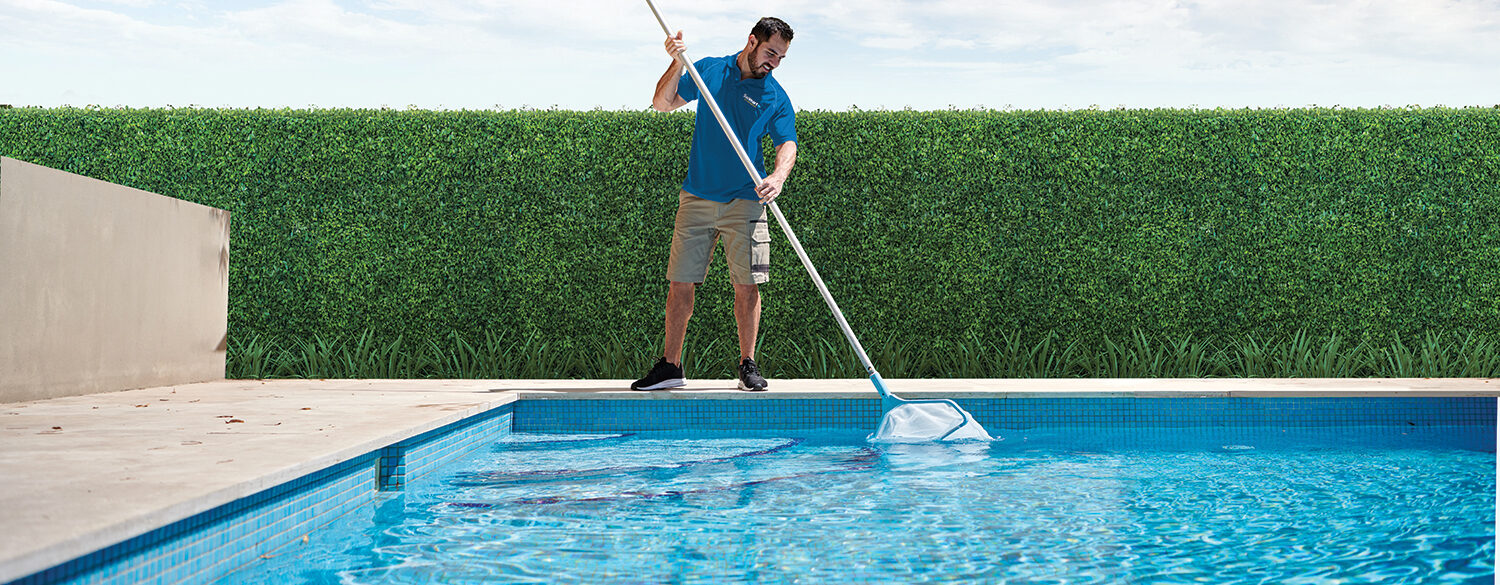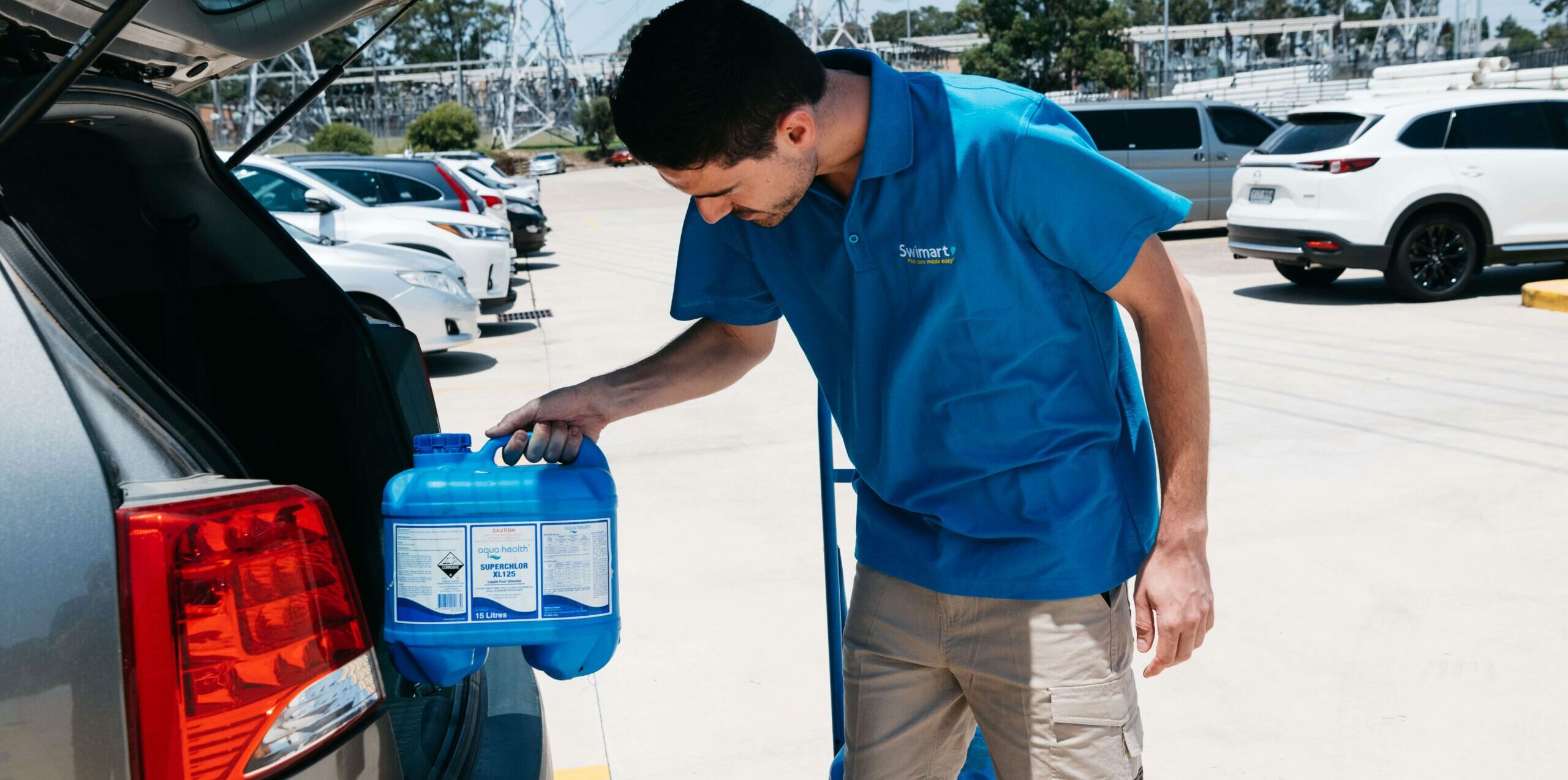Product Info
Products of the month: Starver®X and Starver®M
17 January 2017
Caused by organic matter like leaves, plants and grass clippings, as well as rain, fertiliser and even swimmers, phosphate is one of the biggest causes of algae blooms in your swimming pool. It’s persistent and does not break down naturally, which is why Swimart’s products of the month – Starver®X and Starver®M – are so […]
Caused by organic matter like leaves, plants and grass clippings, as well as rain, fertiliser and even swimmers, phosphate is one of the biggest causes of algae blooms in your swimming pool. It's persistent and does not break down naturally, which is why Swimart's products of the month - Starver®X and Starver®M - are so important.
We've put together some commonly asked questions about these fantastic products that will explain how they help keep pool water clean and hygienic.
- What is the difference between Starver®X and Starver®M?
- Starver®X is a curative product, which means you only use it for high phosphate levels 2ppm or above. Starver®M on the other hand is a preventative solution that works as an ongoing maintenance product to keep the phosphate level as close to zero as possible. We recommend you use it weekly once the level is below 2ppm.
- Is phosphate a common problem for Australian pools?
- Yes. In fact, last summer, some of the highest recorded levels of phosphate were reported in pools right across the country. In some areas, high levels have been attributed to drought related dust fallout.
- Where does phosphate come from?
- Phosphate is caused by organic matter like leaves, plants and grass clippings, as well as rain, fertiliser and even swimmers leave phosphate in to the water. Also, some pool chemicals contain phosphates. In most cases, the presence of phosphate indicates that this is likely to be an ongoing problem, which is where Starver®M comes in handy.
- What problems does phosphate cause in my pool?
- Phosphate is a major food source for algae. So, if you have phosphate in the water algae is guaranteed to follow. Phosphate also prevents other chemicals from working at their most effective levels, including algaecides, chlorine, salt chlorination and other sanitisers. If they're not able to do their job properly, then that puts extra pressure on filtration and sanitation equipment.

- How do I prevent phosphate from getting in my pool in the first place?
- There are three ways you can minimise phosphates from overtaking you pool:
- Prevent runoff from lawns, landscaping or washing decks from entering the pool
- Regularly remove leaves, dog hair and other debris from the pool
- Arrange for a Swimart pool professional to regularly test phosphate levels
- My pool has tested negatively to phosphate but I can see algae in my pool – is this common?
- Yes. If you definitely have algae in your pool, you can be sure that phosphates are present. What's happening is that the phosphate in your pool water has been consumed, and masked, by the algae and that is why it is not showing when a reading has been taken of your water sample.
- If I have algae, why don't I just use algaecide?
- Yes, you can. You can treat algae very efficiently with the correct algaecide. You need to understand, however, that decaying algae increases the amount of phosphate in the water. New algae will, therefore, flourish even quicker and, as the problem escalates, it becomes more difficult to combat. Therefore, it makes sense to add Starver®X and Starver®M to your pool water to keep the phosphate level to a minimum.

- If my pool water has high levels of phosphate, should I shock the pool by using a full bottle of Starver®X or Starver®M?
- No. The most efficient way to reduce phosphate levels in your pool water is to use small quantities. If the level is above 2ppm though a large dose of Starver®X is recommended to reduce the level to a manageable one, and then revert to small regular doses of Starver®M to maintain a healthy level as close to zero as possible.
- Should I add Starver®M on a regular basis?
- Yes. There are many sources of phosphate and these are being continually introduced to the pool water. It makes sense, therefore, to dose regularly and use Starver®M as part of an ongoing maintenance program.
- What are the correct doses when using Starver®X and Starver®M?
- You only need to use Starver®X as a curative for when the phosphate level is above 2ppm. In most cases, in an average size pool (50 to 60,000-litres), a one-litre dose will reduce the level to a manageable one below 2ppm where you can then continue to use Starver®M.
For phosphate levels below 2ppm, use Starver®M as a preventative measure. In an average size pool (50 to 60,000-litres) a weekly 250ml dose will keep the phosphates down to a healthy level as close to zero as possible.
- Do I add Starver®X and Starver®M directly to the pool water?
- It is best to add these products in small quantities via the pool skimmer direct to the filter as tests have shown that much of the phosphate collects in the filter.
If you're unsure how to properly measure phosphate levels in your pool, or would like to find out more about Starver®X and Starver®M, pop in to your local Swimart store or visit www.swimart.com.au


 AUS
AUS NZ
NZ 




